Mark Anthony Neal's Blog, page 565
November 4, 2016
William Jelani Cobb: How Perceptions of Race and Sex Impact the 2016 Presidential Election
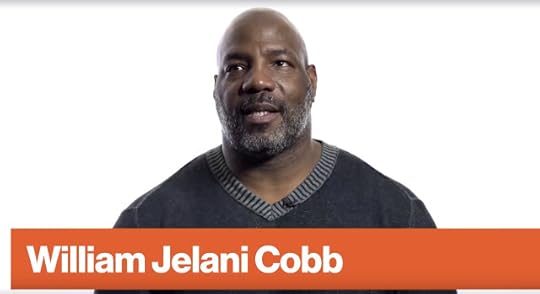 'How can we chart moral progress? One popular narrative holds that it increases steadily, rising over time. But Jelani Cobb argues it happens in fits and starts, like an EKG line that spikes and falls. Cobb's latest book is The Substance of Hope: Barack Obama and the Paradox of Progress.'
'How can we chart moral progress? One popular narrative holds that it increases steadily, rising over time. But Jelani Cobb argues it happens in fits and starts, like an EKG line that spikes and falls. Cobb's latest book is The Substance of Hope: Barack Obama and the Paradox of Progress.'
Published on November 04, 2016 11:23
November 3, 2016
Carrie Mae Weems Has No Choice But to Make Art Political
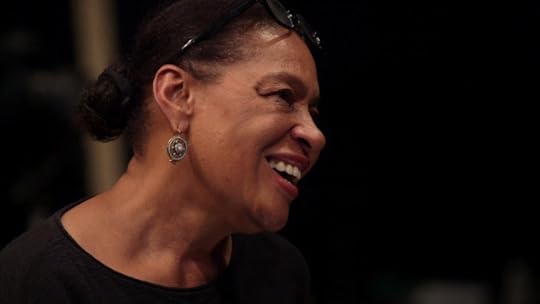 'The visual artist
Carrie Mae Weems
has long been known for taking on racial injustice, gender inequality and politics in her work. Recently, she released a pro-Hillary Clinton video urging people to vote. "I'm an artist who is interested in bringing art into politics and politics into art," she told WNYC's Jami Floyd. Weems has a new solo exhibit at the Jack Shainman Gallery in Chelsea running through Dec. 10, and spoke to WNYC about race, politics, art and what the future holds for artists of color.' -- +WNYC
'The visual artist
Carrie Mae Weems
has long been known for taking on racial injustice, gender inequality and politics in her work. Recently, she released a pro-Hillary Clinton video urging people to vote. "I'm an artist who is interested in bringing art into politics and politics into art," she told WNYC's Jami Floyd. Weems has a new solo exhibit at the Jack Shainman Gallery in Chelsea running through Dec. 10, and spoke to WNYC about race, politics, art and what the future holds for artists of color.' -- +WNYC
Published on November 03, 2016 18:38
Hank Willis Thomas Examines Race And Popular Culture Through Art And Photography
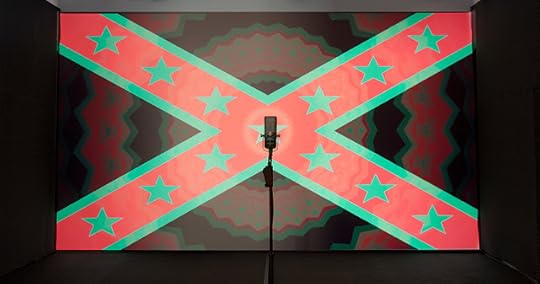 'For Hank Willis Thomas, a good photograph is an image that sticks with somebody long after they first see it. As a photographer and conceptual artist, Thomas uses images to critique cultural perceptions about race, gender and class. His interactive installation Black Righteous Space on exhibit at the Nasher Museum as part of the Southern Accent show, pairs the colors of the Pan-African flag with the symbolism of the Confederate flag. WUNC Host Frank Stasio talks with Thomas about the message and motivations behind his art.'
'For Hank Willis Thomas, a good photograph is an image that sticks with somebody long after they first see it. As a photographer and conceptual artist, Thomas uses images to critique cultural perceptions about race, gender and class. His interactive installation Black Righteous Space on exhibit at the Nasher Museum as part of the Southern Accent show, pairs the colors of the Pan-African flag with the symbolism of the Confederate flag. WUNC Host Frank Stasio talks with Thomas about the message and motivations behind his art.'
Published on November 03, 2016 18:22
“How Can I Ease the Pain?”: Cannabinoids + The NFL + Addiction
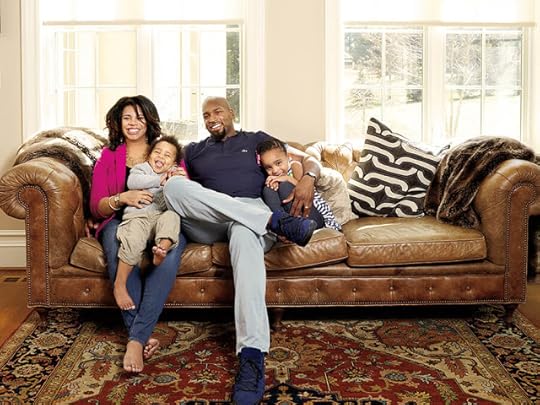 Retired NFL player Eugene Monroe and his family“How Can I Ease the Pain?”: Cannabinoids + The NFL + AddictionDavid J. Leonard | @DrDavidJLeonard | NewBlackMan (in Exile)
Retired NFL player Eugene Monroe and his family“How Can I Ease the Pain?”: Cannabinoids + The NFL + AddictionDavid J. Leonard | @DrDavidJLeonard | NewBlackMan (in Exile)When the Baltimore Ravens started their season, they had a new protector of Joe Flacco's blindside. Unfortunately, with the release and ultimate retirement of Eugene Monroe this off-season, the NFL will need to find another conscience.
After several months of public advocacy for the NFL to change its marijuana policy, the Baltimore Ravens released its left tackle during the off-season. In a league where loyalty is a one-way street, especially for multi-million dollar offense lineman who play only a handful of games, and players that are regularly cut with little fanfare, the release and ultimate retirement of an offensive tackle in his 7th year in the league would usually go unreported.
Eugene Monroe isn’t just any player. He, along with several other retired players have been at the forefront of the movement to change the NFL’s drug policy. Tired of the pain, the side effects from drugs promised to ‘help him,” and fearful about addiction to prescribed narcotics, he wanted to find alternatives. Writing in The Player’s Tribune, Monroe, who has said he will not “allow his son to play football," made his motivations clear:
“I became the first active NFL player to openly advocate for the use of cannabinoids (medical marijuana) to treat chronic pain and head injuries. The NFL relies heavily on opioids to get players back on the field as soon as possible, but studies have shown medical marijuana to be a much better solution; it is safer, less addictive and can even reduce opioid dependence.”
Noting that studies have found that cannabidiol (CBD) work as a neuroprotectant, “which can shield the cells in the brain from injury or degeneration,” Monroe has called for research and a revaluation of the NFL’s anarchic policy: “We need to learn more about this.”
Hoping also to address the issues surrounding concussions and CTE, and to lessen the short and long term effects of football, Monroe has joined several former players, including Jake Plummer, Kyle Turley, Nate Jackson, in advocating for a cultural shift within the NFL. Calling on the NFL to not change its policies with respect to marijuana but to support research so that players can best protect themselves while playing the game of football, this #cannabis4pain movement is pushing the NFL to a moral crossroads.
Nate Jackson, a former tight end with the Broncos, estimated that an estimated 50 percent of NFL players use marijuana, often for medical reasons. “I weeded as needed,” he told Andrea Kremer on HBO’s Real Sports in 2014. “Marijuana was something that helped me, as the season wore on my body would start to break down. I was in a lot of pain.”
Former NFL quarterback, Jake Plummer recently started taking CBD. Noting its positive impact on his health, he wishes it had been available while he was playing. “It might have the potential to save the game, and improve the lives of current and former players. Research is needed.” Studies are essential in learning “how CBD impacts concussion recovery, physical recovery, and mental recovery.”
Monroe has put money behind the cause. He donated $80,000 to the University of Pennsylvania and Johns Hopkins University to study “the benefits of cannabidiol (CBD) for pain management and [in treatment of]” chronic traumatic encephalopathy (CTE)” with both current and retired NFL players.
While marijuana remains banned, players are encouraged to pop pills to get back on the field. A 2011 study of drug use among former NFL players from researchers at Washington University in St. Louis found that over fifty percent of respondents acknowledged use of opioids during their careers. A startling 71% reported misusing opioids, often as a means to treat undiagnosed concussions. Highly addictive and with significant short and long term side effects, the drug culture of the NFL hurts current and former players.
The Washington University study found that 93% of respondents reported daily struggles with pain. Over 80% suffered from pain described at severe to moderate levels, a rate “three times the rate (26%) of the general population.” Whereas close to 90% reported excellent health at the start of their NFL careers, only 13% noted excellent health in their retirement years. The pressure to stay on the field in the face of countless injuries and the long-term physical toll resulting from an NFL careers contributes to misuse of opioids and long-term addiction.
Players are also using marijuana to stay on the field, to withstanding the physical suffering, and the emotional challenges of playing football at an elite level. The Buffalo Bills Seantrel Henderson was recently suspended four games following a positive test for marijuana. Recently diagnosed with Crohn’s Dissease, a painful intestinal disease caused by excessive inflammation, which studies have shown can be mitigated by cannabis use, Henderson’s medical needs are clearly of secondary importance. The NFL’s rules are what matter.
As noted by Henderson’s agent, Brian Fettner, “Merciful or not, there is no medical exception that the NFL will accept. It doesn’t matter that Seantrel is battling Crohn’s disease, and has had his intestines outside his body. It doesn’t matter how you take it, if you digest the cannabis, that’s it."
Embracing a Nixon-Trump approach to law and order, and a culture that sees the NFL’s almost 70 percent black players as nothing more than “super predators” one puff away from dangerous criminal activity, there are no provisions for players who are hurting physically and mentally, to use marijuana to return to the field and more importantly live a normal life without pain.
Nevermind those stereotypical narratives that depict NFL players as ‘thugs’ and criminals who simply want to get high; never mind those who lament the influence of hip-hop culture or today’s kids who cannot “stay off the weed”, the debate surrounding marijuana usage is one of health and medicine.
A 2009 study from the Institute of Medicine concluded that, “Cannabinoids can have a substantial analgesic effect.” A 2013 study found that use of Cannabidiol allows mice to regenerate brain cells responsible depression, anxiety, and chronic stress. A more recent study at Harbor-UCLA Medical Center found that patients with high levels of THC were “less likely to die of their injuries.”
In their initial studies, Dr. Mechoulam and others have demonstrated the potential benefits. According Dr. Raphael Mechoulam, professor Medicinal Chemistry at the Hebrew University of Jerusalem, “marijuana may be of value in lowering the damage from concussions.”
It is no wonder that Dr. Lester Grinspoon, professor emeritus of psychiatry at the Harvard Medical School, in an open letter to Commissioner Roger Goodell, called upon the league to support research “designed to determine whether or not some combination of cannabinoids is effective in preventing the consequences of concussions” all while thwarting its own war on drugs
“I implore you to immediately stop subjecting players to drug tests for marijuana, so they no longer face severe penalties for choosing a potentially life-saving medicine that can be used legally in twenty states.”
While such research is widespread, the NFL continues to maintain its antiquated position, claiming there still needs to be more research. The NFL has historically hid behind the law and America’s draconian approach to drugs. Times have change. In 2014, less than 30% of NFL teams played “in a weed-friendly city.” Currently, over 65% of NFL teams play in states that allow for medical marijuana.
Still the fight to change the NFL’s approach to marijuana remains an uphill battle. Eugene Monroe knows this all too well. After complaining that the Ravens “continue to distance themselves from me and my cause,” Monroe found himself without a job.
While there is no direct evidence that links his activism to his release, and the Ravens maintained that his release was all about football, Monroe told the New York Times, "I can't say for sure whether or not my stance on medical cannabis was the reason the Ravens released me. However, as I've said in the past, they have distanced themselves from me and made it clear that they do not support my advocacy.” Yet, despite his value, Monroe’s availability did not prompt other teams to move to sign him. On July 21, 2016 Monroe announced his retirement from the NFL. Citing fears about long-term health issues, and increased anxiety about CTE, it is hard not to think about how the NFL’s drug policy and Monroe’s fierce advocacy contributed to his retirement.
Power remains in the hands of the owners and the league. Fear of potential suspensions, and lost of endorsement, undermines the push for this medical change. The release of Monroe further threatens change, reminding players that there are potential costs in challenging the NFL orthodoxy.
Plummer told me, “They are not going to lead the charge unless it impacts the bottom line.”
Race and anti-black racism are also part of the challenge here. The racial stereotypes surrounding the NFL and the false narratives that portray it as the ‘National Felons’ League’ shape the conversation around marijuana. Look no further than the media spectacle and Jerry Jones comments surrounding Ezekiel Elliott merely VISITING a LAWFUL marijuana dispensary in Seattle.
It is no wonder that NHL, and Olympic sports (under the watch of WADA) have far more relaxed policies with respect to marijuana. In fact, in the NHL marijuana is not even banned.
The longstanding (racial) stigmas associated with marijuana use, and America’s racialized war on drugs is at the core of these very different approaches to marijuana use from its players. The difficulty in changing the NFL’s approaches to drug rests with a culture that sees black bodies as inherently criminal. According to Michelle Alexander, law professor at The Ohio State University and author of The New Jim Crow, “the term black and criminal is nearly redundant. To be a black man is to be thought of as a criminal, and to be a black criminal is to be despicable – a social pariah.” A study in the Journal of Alcohol and Drug Education found that while African Americans constitute 12-15 percent of all monthly drug users, 95% of respondents pictured a black drug user. Whereas those participating in overwhelming ‘white sports,’ from hockey to lacrosse, can get high with impunity, black players don’t have such privileges. Using for medical purposes remains elusive despite the research and the ample player protest.
Research also demonstrates that whites feel less empathy for African Americans. Building on “archival data from the National Football League injury reports reveal that, relative to injured White players, injured Black players are deemed more likely to play in a subsequent game,” one study found that “that people assume a priori that Blacks feel less pain than do Whites.” Seen as immune from pain, and as ‘criminals’ and ‘thugs,’ it is no wonder that the NFL continues to lag behind other sports and society as a whole with respect to the medical use of marijuana.
Eugene Monroe, Nate Jackson, Jake Plummer, and others are not just fighting the NFL and its drug policy but a culture that loves football no matter the cost. It is battling a culture that neither sees nor seems to care about the pain and suffering of its gridiron heroes. In fact, the NFL machine routinely valorizes those players who can ‘play hurt,’ who have the ‘metal’ and the ‘intestinal fortitude.’ To recognize the pain and suffering, and the beneficial treatments, undercuts this destructive culture and the narrow understanding of masculinity.
The fight to change the NFL’s marijuana policy isn’t simply about decriminalization within the NFL. The recent changes regarding testing rules already opens up possibilities for players to use oils and other forms of CBD. It is about legalization and changing a culture that provides all players with access and education of natural remedies that will enhance their physical and mental health. It is about changing a culture that sees NFL players as nothing, as irrelevant, when not playing. To embrace marijuana, and its potential health benefits, is to say the long-term physical and mental health of men who play football matters.
The NFL also has a potential to be a leader with respect to workplace safety, America’s prescription pill crisis, and health issues throughout the nation.
“I feel like the NFL has a responsibility to look into it, to delegate time and money to research this for its players,” Derrick Morgan, a linebacker with the Titans told Katie Couric during an interview with Monroe. “Given how much influence that the NFL has on society, I think it would help the greater good. There’s a lot of people suffering and a lot of people that can benefit from cannabis as a medical treatment.”
While clearly not driven by justice or righteousness, the NFL can be instrumental in challenging a war on drugs that as ravaged the black community, torn families apart and destroyed lives over some weed. It has the potential to shift the conversation and destabilized America’s “New Jim Crow.”
The players fight is challenging a culture of racism that is comfortable with a racially divided war that requires black bodies, whether they be NFL stars or unknown statistics, to be seen as deviant and criminal. To see NFL players, disproportionately black, as using marijuana to heal not only undermines what the league is selling about the game but what the nation is selling about who is guilty and who is innocent in the war on drugs.
+++
David J. Leonard is Professor in the Department of Critical Culture, Gender and Race Studies at Washington State University, Pullman. Leonard's latest books include After Artest: The NBA and the Assault on Blackness (SUNY Press) and the forthcoming Playing While White: Privilege and Power on and off the Field. He is the co-editor of African Americans on Television: Race-ing for Ratings (Praeger Press) with Lisa Guerrero and Beyond Hate: White Power and Popular Culture with C. Richard King. He is currently working on a book Presumed Innocence: White Mass Shooters in the Era of Trayvon about gun violence in America. You can follow him on Twitter at @drdavidjleonard.
Published on November 03, 2016 18:09
November 2, 2016
Robin Kelley: Revisiting Black Marxism in the Wake of Black Lives Matter
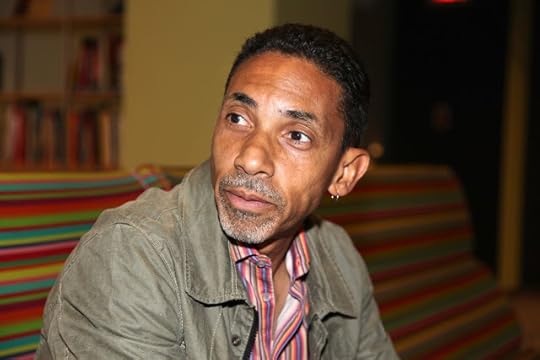 'Robin D. G. Kelley, is Distinguished Professor of History and Black Studies & Gary B. Nash Endowed Chair in U.S. History at UCLA, and current Chair of the Department of African American Studies and a prolific author and editor. Kelley reflects on the life and work of Cedric J. Robinson, who just passed this year, especially his magnum opus, Black Marxism: The Making of the Black Radical Tradition (published 33 years ago) in the wake of what may be the most dynamic Black radical movement to emerge in decades – the Movement for Black Lives.' -- via Speak Out Now
'Robin D. G. Kelley, is Distinguished Professor of History and Black Studies & Gary B. Nash Endowed Chair in U.S. History at UCLA, and current Chair of the Department of African American Studies and a prolific author and editor. Kelley reflects on the life and work of Cedric J. Robinson, who just passed this year, especially his magnum opus, Black Marxism: The Making of the Black Radical Tradition (published 33 years ago) in the wake of what may be the most dynamic Black radical movement to emerge in decades – the Movement for Black Lives.' -- via Speak Out Now
Published on November 02, 2016 10:31
November 1, 2016
Queering the Cool: A Moonlight Review by Stephane Dunn
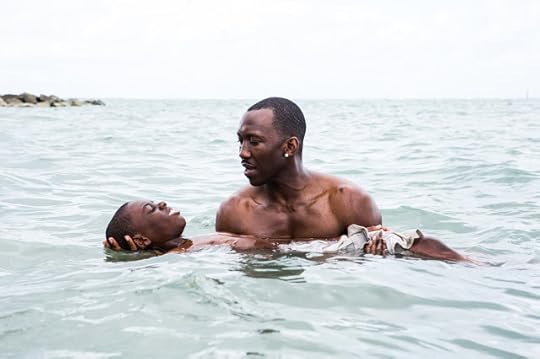 Queering the Cool: A Moonlight Review by Stephane Dunn | @DrStephaneDunn | NewBlackMan (in Exile)
Queering the Cool: A Moonlight Review by Stephane Dunn | @DrStephaneDunn | NewBlackMan (in Exile) I knew Barry Jenkins’s Moonlight, the follow-up to his 2008 film Medicine for Melancholy, would provoke some discomfort. When it screened on Morehouse’s campus a few weeks before its official release, some students were thrilled it was going to be screened, but a number of others were downright reluctant to take advantage of the advanced screening. They viewed the trailer and to paraphrase one of the whispered responses that I got, decided, ‘No, no, that’s not really a film for me.” Translation: even a trailer that hinted at an interrogation of heterosexuality as a fundamental marker of street cred and ‘real’ black masculinity was unsettling.
Moonlight’s exploration of the relationship between violence, normative scripts of heterosexual masculinities and homophobia with a young black boy at its center make Moonlight a rare coming of age motion picture and rarer still in the coming of age in the hood dramas we’ve seen since the early 1990’s. Further, the queer gaze that informs the narrative offers something else entirely too rare though precious in contemporary film, a thoughtful representation of black male intimacy and vulnerability with each other.
Set primarily in Miami – a nod to the autobiographical nuances of the story – Jenkins translates the traumatic realities of his childhood into a haunting narrative aided by the moving cinematography of James Laxton and the poetic sensibility Jenkins infused into a screenplay that emerged out of a story by playwright Tarell Alvin McCraney. “Moonlight” is an apt symbolic signifier on the deceptive social posturing that accompanies the performance of accepted young black male identities in the inner city. The small cast rounds out with the three actors playing the main character in three different life stages from young Little to the adolescent Chiron and finally the grown up Black played respectively by newcomer Alex R. Hibbert, Ashton Sanders and Trevante Rhodes.
House of Cards and Luke Cage veteran, the brilliant Mahershala Ali, continues his string of strong roles as Juan, a drug dealer, surrogate father to Little while Naomie Harris appears in a role we’ve never seen her in as Little’s/Chron/Black’s crackhead, abusive mother, Paula. Janelle Monae plays her polar opposite, a ideal maternal-surrogate mother to Little/Chiron, and his one complicated childhood friend and elusive love Kevin is played by Jharrel Jerome and Andre Holland. Ali, who abruptly departs from the story through his death off screen and presumably due to his violent career, helps the narrative complicate a bit a role we’ve seen many times through his efforts to literally and figuratively feed Little both in body and affirmation of self-worth and self-identity despite the violent, contrary demands of the street that Little emulate dominant scripts of black masculinity. There is a big BUT though that undercuts it; Juan’s drugs feed Paula’s addiction.
Moonlight intends to dramatize the psychic brutality imposed on black boys and young black men who don’t, can’t, and shouldn’t try to model traditional constructions and social notions of who young black men growing up in the inner city are; Little/Chiron is mercilessly harassed and beaten by the cool ‘thugs’ [the bullies] at school and in the street for not being “tough” and for being a sissy, or more harshly in his own mother’s words, a “faggot.”
The crack head black mother is by now a pretty common representation of black motherhood in the inner city whether in ghettocentric black patriarchal dramas or films like the Blind Side and Losing Isaiah. Indeed, in the first, black mothers are either hardly present, peripheral figures (ex. Straight Outta Compton), self-sacrificing Big Mama saints or dominating, unsupportive or harsh figures who threaten to emasculate sons. It’s a reality that caused Harris to reject the role initially until Jenkins convinced her; the character was drawn from his actual family circumstances.
Still, the mother Jenkins creates in Moonlight is disappointingly typical since we primarily get one dimensional portrayals of black mothers or black women with addiction issues, especially poor and working class black women; at first sight Paula appears to be a working healthcare professional and single mother but she quickly morphs into a raging ‘loose’ or hypersexual woman, who disses her son for the men she brings home, and rags on her son for not being a 'real' and 'normal' brother. We do not get a glimpse of her story and worse because we don’t, and she mostly traumatizes her son for his perceived lack of correct manliness, she personifies the imagery of dysfunctional black mothering in the hood.
The other woman in the film, Juan's nurturing girlfriend Teresa (Janelle Monae) functions as Paula’s opposite. When Ali brings the boy into their quiet home outside the projects, she immediately becomes the perfect surrogate mother, feeding him and gently prodding him to open up and then orienting herself to his silence. We never see her outside of this domestic space or learn a single thing about her.
Moonlight still admirably posits an interrogation of cultural investments in homophobia in order to cling to the false sense that heterosexuality defines an unquestioned authentic and ‘normal” black manliness, though that too, while hugely important and compelling, is limited. A bright film student of mine who viewed the film was left longing for a film for him, one that appeared to have a non-heterosexual gaze in mind. Jenkins’s treatment of sexual and emotional desire between the two friends in adolescence and adulthood is restrained; Little becomes Black, an adult man whose sexual life and self-expression are set on mute.
Does this treatment serve to ease the unusual narrative portrayal of black male to black male vulnerability and sexual desire for a heterosexual spectatorship that is resistant to it? I dare say it does. Maybe that framing can only be read as problematic if that was intended, since the film is not just attempting to dramatize a personal past experience of traumatic bullying due to being perceived as Other – gay and not modeling the street approved posturing of an authentic cool black masculinity – but to talkback to the bullies, and moreover to the heterosexist patriarchal cultural mores that breed psychic and physical violence. Moonlight may not fully realize its potential in this, but it certainly flashes brilliance and beauty in the effort.
+++
Stephane Dunn is a writer and professor and the director of the Morehouse College Cinema, Television, & Emerging Media Studies Program (CTEMS). Her publications include the 2008 book Baad Bitches & Sassy Supermamas: Black Power Action Films (U of Illinois) and a number of articles in mediums such as Ebony.com, The Atlantic, The Root.com, Bright Lights Film journal, and others. Follow her on Twitter at twitter @DrStephaneDunn and www.stephanedunn.com.
Published on November 01, 2016 15:35
Left of Black S7:E3: Radical Aesthetics and Modern Black Nationalism
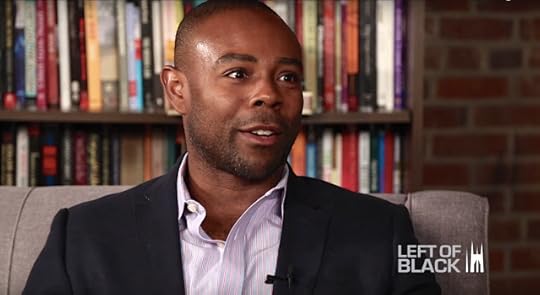 Left of Black S7:E3: Radical Aesthetics and Modern Black Nationalism
Left of Black S7:E3: Radical Aesthetics and Modern Black NationalismOn this episode of Left of Black, host Mark Anthony Neal (@NewBlackMan) is joined in-studio by GerShun Avilez in a discussion of his new book Radical Aesthetics and Modern Black Nationalism (University of Illinois Press), which examines how Black Nationalist rhetoric impacted African American artistic experimentation in the late 20th and 21st centuries in drama, novels, poetry, film, and visual art. According to reviewer Sasha Panaram, “Radical Aesthetics is more than timely, it is essential – required reading.”
Avilez is Associate Professor of English and Comparative Literature and Director of the Program in Sexuality Studies at the University of North Carolina at Chapel Hill.
Left of Black is a weekly Webcast hosted by Mark Anthony Neal and produced in collaboration with the John Hope Franklin Center at Duke University and in conjunction with the Center for Arts + Digital Culture + Entrepreneurship (CADCE) and the Duke Council on Race + Ethnicity
***
Follow Left of Black on Twitter: @LeftofBlack
Published on November 01, 2016 02:01
October 31, 2016
I Don’t Remember: A Reading by Hilton Als
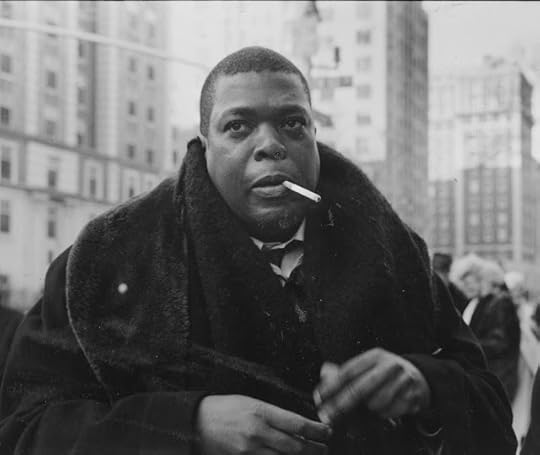 Hilton Als © Dominique Nabokov'Writer, editor, and curator Hilton Als gives a reading of his work, followed by a conversation with Thomas Beard, Co-founder and Director, Light Industry, a venue for film and electronic art; and Programmer at Large, Film Society of Lincoln Center.' -- +Museum of Modern Art
Hilton Als © Dominique Nabokov'Writer, editor, and curator Hilton Als gives a reading of his work, followed by a conversation with Thomas Beard, Co-founder and Director, Light Industry, a venue for film and electronic art; and Programmer at Large, Film Society of Lincoln Center.' -- +Museum of Modern Art
Published on October 31, 2016 02:58
Professional Black Girl - Episode 8: Jasiatic & Nahimana
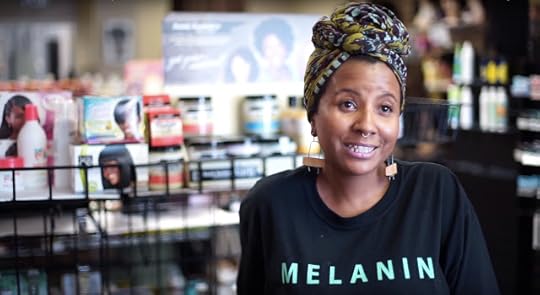 'On this episode of #ProfessionalBlackGirl Meet Jasiatic - Home Schooling Mother. Photographer. Jackie of All Trades - and her mini-me Nahimana - Student. Traveler. Snapchat Specialist. #ProfessionalBlackGirls raised #ProfessionalBlackGirls.' -- +Yaba Blay
'On this episode of #ProfessionalBlackGirl Meet Jasiatic - Home Schooling Mother. Photographer. Jackie of All Trades - and her mini-me Nahimana - Student. Traveler. Snapchat Specialist. #ProfessionalBlackGirls raised #ProfessionalBlackGirls.' -- +Yaba Blay
Published on October 31, 2016 02:40
Nas talks Tech Investing and His Venture-Capital Firm Q.B.V.P.
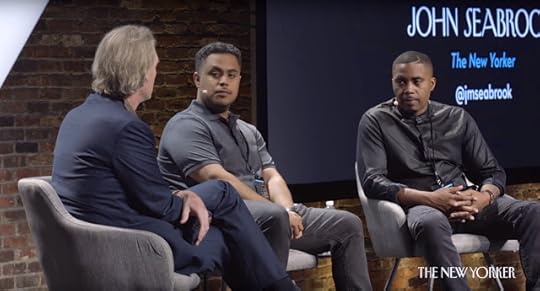 New Yorker Staff writer John Seabrook talks with the musician Nas and his business partner, Anthony Saleh, about their venture-capital firm, QueensBridge Venture Partners.
New Yorker Staff writer John Seabrook talks with the musician Nas and his business partner, Anthony Saleh, about their venture-capital firm, QueensBridge Venture Partners.
Published on October 31, 2016 02:33
Mark Anthony Neal's Blog
- Mark Anthony Neal's profile
- 30 followers
Mark Anthony Neal isn't a Goodreads Author
(yet),
but they
do have a blog,
so here are some recent posts imported from
their feed.



